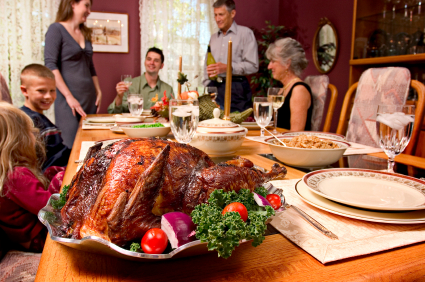I left my hometown of Buffalo, NY more than thirty years ago and built a life in New England as a father, husband, and professional. You know, an adult. But when I return home for the holidays I’m still seen as “Bobby.” Like I’m still 15. And you know what? After a few hours of being treated like Bobby, I start to act like that kid who always had to be right and prove others wrong.

This happens all across America as families are reunited at holiday table: In the absence of continuous daily connection, we get drawn into old, familiar habits, seeing each other and treating each other as if we were the same people we were ten, twenty, or thirty years ago. Though the topic of conversation may be new, the actions and patterns around the table are predictable. Some will raise their voices, some will withdraw, some will try to hold the peace. The old painful subjects we tacitly avoid may be brought to the fore. Is it any surprise that so many of us are anxious about getting together for the holidays?
But it doesn’t have to be that way. Most of us have also had the delicious experience of love and connection with family. How can we increase the likelihood of love and connection, and lessen the likelihood of the old dance of conflict? Here are some tips that we’ve learned from families and from our work with opponents on social, moral, religious and identity issues who have found ways to engage that enhance, rather than corrode, relationships.
1. Be intentional. Many conversations go off-track because we get triggered into an automatic negative response by what someone says, which in turn triggers them, and off we go. Instead, think in advance about what sets you (and the family) off, and about the kind of conversation you’d rather have. What has happened before that you want to avoid? What’s been missing that you’d like to see grow? Thinking about what you want, rather than just reacting to whatever happens, is the first step to changing the pattern.
2. Talk with other family members about your hopes, and be curious about theirs.
3. If you know that a hard subject might come up, plan for it. Don’t just don’t wait for it to happen.
4. Propose some agreements that can be made about how you’ll treat each other when you have your conversation. Here are some ideas:
• Respect: No interrupting each other.
• Voluntariness: No pressure on any one to speak.
• Honor: No criticizing, judging, or trying to persuade another.
• Curiosity: Ask, don’t assume you know.
• Ownership: Speak for yourself and from your experience, neither against nor on behalf of anyone else.
5. Use a structure. Unplanned, conflictual conversations can take on a life of their own. Shift an old conversation by using a new format.
• Focus on one issue or question at a time.
• Go around the table, giving each person the same amount of time to say something. Questions and comments are held until everyone has had a chance to speak.
• Ask questions, but only those that enable you to better understand where the speaker is coming from.
6. When you’re finished, talk about how it went. What was useful? What you would want to do differently next time?
In our experience, people who apply these tips usually wind up feeling closer, despite the issues and past conflicts that might have divided them. Why? This approach releases us from the oppressive weight of old expectations, reactions, and patterns. It can enable us to be seen more clearly, to feel more freedom and hope, and to see other family members anew. Now, those are great gifts for the holidays.
Bob Stains is Senior Vice President at The Public Conversations Project. He also consults to the Interpersonal Skills Component of the Harvard Negotiation Project at Harvard Law School, and enjoys cooking and sharing family meals with his wife and 3 children.
